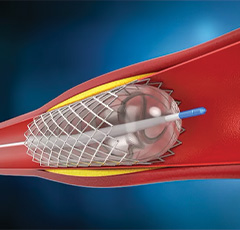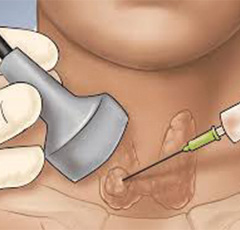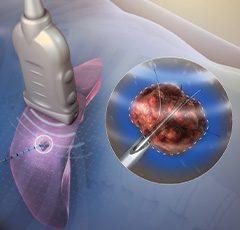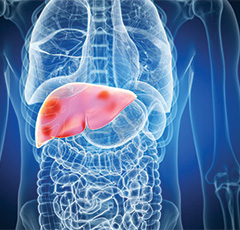Overview
Interventional Radiology (IR) is a medical specialty that uses minimally invasive procedures and imaging guidance to diagnose and treat a wide range of conditions. By utilizing techniques such as X-rays, CT scans, and ultrasounds, interventional radiologists can perform precise and effective treatments with less risk, pain, and recovery time compared to traditional surgery. The IR team focuses on patient-centered care, providing advanced solutions for complex medical issues and enhancing patient outcomes through innovative and targeted approaches.
TREATMENTS & PROCEDURE

Minimally invasive procedure to open narrowed or blocked blood vessels.
Angioplasty uses a balloon to open narrowed or blocked arteries, often followed by stent placement to keep the artery open, improving blood flow and reducing symptoms of cardiovascular diseases.

Procedure to block abnormal blood vessels and control bleeding.
Embolization involves injecting substances to block blood flow to abnormal blood vessels, tumors, or areas of bleeding, effectively controlling hemorrhage and reducing tumor size.

Precise biopsies using imaging guidance for accurate diagnosis.
Image-guided biopsies use imaging techniques to accurately locate and sample tissue from suspicious areas, ensuring precise diagnosis of conditions such as cancer or infections.

Technique using heat to destroy cancer cells and tumors.
Radiofrequency ablation (RFA) uses high-frequency electrical currents to generate heat and destroy cancer cells or tumors, providing an effective treatment option with minimal damage to surrounding tissues.

Transjugular intrahepatic portosystemic shunt (TIPS) for portal hypertension.
The TIPS procedure creates a shunt within the liver to redirect blood flow and reduce portal hypertension, alleviating complications such as variceal bleeding and ascites in patients with liver disease.
Minimally invasive procedure to open narrowed or blocked blood vessels.

Angioplasty uses a balloon to open narrowed or blocked arteries, often followed by stent placement to keep the artery open, improving blood flow and reducing symptoms of cardiovascular diseases.
Procedure to block abnormal blood vessels and control bleeding.

Embolization involves injecting substances to block blood flow to abnormal blood vessels, tumors, or areas of bleeding, effectively controlling hemorrhage and reducing tumor size.
Precise biopsies using imaging guidance for accurate diagnosis.

Image-guided biopsies use imaging techniques to accurately locate and sample tissue from suspicious areas, ensuring precise diagnosis of conditions such as cancer or infections.
Technique using heat to destroy cancer cells and tumors.

Radiofrequency ablation (RFA) uses high-frequency electrical currents to generate heat and destroy cancer cells or tumors, providing an effective treatment option with minimal damage to surrounding tissues.
Transjugular intrahepatic portosystemic shunt (TIPS) for portal hypertension.

The TIPS procedure creates a shunt within the liver to redirect blood flow and reduce portal hypertension, alleviating complications such as variceal bleeding and ascites in patients with liver disease.
Diseases treated
FAQs
Interventional Radiology (IR) uses minimally invasive techniques guided by imaging to diagnose and treat various medical conditions, reducing the need for traditional surgery.
Angioplasty is a procedure that uses a balloon to open narrowed or blocked arteries, often followed by placing a stent to keep the artery open.
An image-guided biopsy uses imaging techniques like CT, ultrasound, or MRI to precisely locate and sample tissue for accurate diagnosis.
The TIPS procedure creates a shunt within the liver to redirect blood flow and reduce portal hypertension, alleviating complications in patients with liver disease.
IR can treat conditions like peripheral artery disease, varicose veins, liver and kidney cancer, spinal fractures, and gastrointestinal bleeding.
Embolization involves injecting substances to block blood flow to abnormal vessels or tumors, effectively controlling bleeding or reducing tumor size.
Radiofrequency ablation uses high-frequency electrical currents to generate heat and destroy cancer cells or tumors, minimizing damage to surrounding tissues.
Vertebroplasty and kyphoplasty stabilize spinal fractures by injecting medical-grade cement into the vertebrae, relieving pain and restoring stability.
Interventional Radiology Doctors

Dr. Mahmood Nasser Al Hajiry
Senior Consultant Interventional and Diagnostic Radiology


















